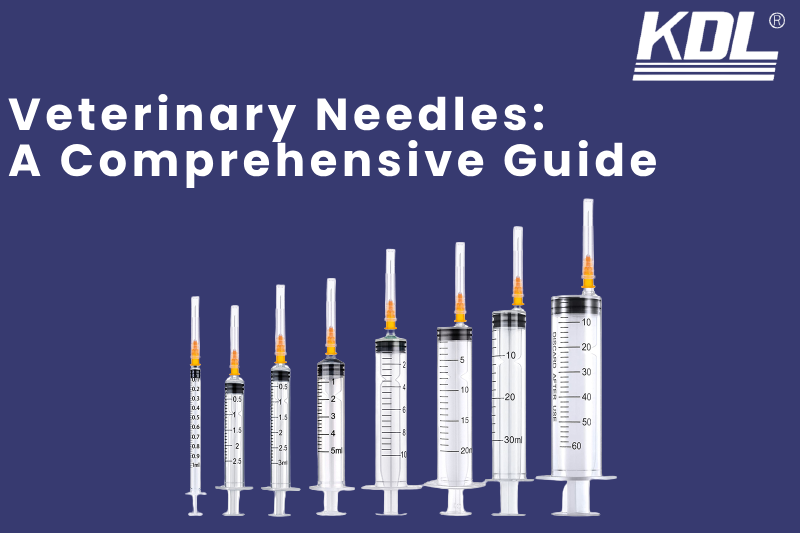
As pet owners, we are always concerned about the health and well-being of our furry friends. And when it comes to veterinary care, one of the most common procedures that pets undergo is the administration of injections or vaccinations. To ensure the safety and comfort of our pets, it is vital to use the right type of needle and to administer the injection correctly. In this article, we will discuss everything you need to know about veterinary needles.
What are Veterinary Needles?
Veterinary needles are used in various medical procedures for animals, such as administering vaccines, taking blood samples, and delivering medications. These needles are typically made of stainless steel and come in various sizes and gauges. The size and gauge of a needle are essential to ensure that the needle can reach the intended area and deliver the required medication or fluid without causing pain or discomfort.
Types of Veterinary Needles
There are different types of veterinary needles used for various purposes. The most common types of needles are:
Standard Hypodermic Needles
These veterinary hypodermic needles are used for administering injections, such as vaccines, medications, and fluids. They are available in different sizes, lengths, and gauges, and the choice of needle depends on the type of animal, the injection site, and the type of medication being administered.
Butterfly Needles
Butterfly needles are designed for use in small animals, such as cats, and for administering fluids or medications that need to be injected slowly. They are also useful for taking blood samples.
Spinal Needles
Spinal needles are used for performing spinal taps and administering anesthetics for surgeries. They are long, thin, and have a sharply pointed tip.
Insulin Needles
Insulin needles are used for administering insulin to diabetic pets. They are shorter and thinner than standard hypodermic needles, and they are available in different sizes and lengths.
Choosing the Right Veterinary Needle Sizes and Gauge
The size and gauge of the needle used for injection depend on the size of the animal, the injection site, and the type of medication being administered. For example, larger animals require longer and thicker needles than smaller animals. Similarly, injections administered in muscle tissue require longer needles than those administered in the skin or subcutaneous tissue.
Injection Techniques
There are different injection techniques used for administering injections to animals. The most common ones are:
Intramuscular injection
Intramuscular injection involves injecting the medication into the muscle tissue. This technique is commonly used for administering vaccines and medications that need to be absorbed slowly.
Subcutaneous injection
Subcutaneous injection involves injecting the medication into the fatty tissue beneath the skin. This technique is commonly used for administering vaccines and medications that are absorbed quickly.
Intravenous injection
Intravenous injection involves injecting the medication directly into the vein. This technique is commonly used for administering fluids and medications that need to take immediate effect.
Caring for Veterinary Needles
After use, veterinary needles should be disposed of properly to avoid injury or infection. Sharps containers should be used to store used needles and should be disposed of according to local regulations. Used needles should never be disposed of in regular trash bins or flushed down the toilet.
The Importance of Using the Right Size Veterinary Needle
If you are a pet owner, you know how important it is to ensure your furry friend receives proper medical care. This includes vaccinations, blood tests, and other procedures that may require the use of needles. While needles may seem like a minor detail, using the wrong size needle can cause discomfort, pain, and even serious complications for your pet. Let’s discuss the importance of using the right size veterinary needle to ensure your pet’s health and well-being.
Using the right size veterinary needle is crucial for several reasons:
Minimizes Pain and Discomfort
Using the right size needle can minimize pain and discomfort for your pet during medical procedures. A needle that is too small may not deliver the medication or fluid as required, causing the procedure to take longer than necessary. On the other hand, a needle that is too large can cause unnecessary pain and discomfort for your pet. Using the right size needle ensures that the procedure is quick and painless, minimizing stress for your pet.
Prevents Complications
Using the wrong size needle can cause complications such as bleeding, bruising, and infection. A needle that is too small may not deliver the required medication or fluid, leading to ineffective treatment. A needle that is too large can cause tissue damage, leading to infection and other complications. Using the right size needle ensures that the procedure is done correctly, minimizing the risk of complications.
Ensures Accuracy
Using the right size needle ensures accuracy in medication or fluid delivery. A needle that is too small may not deliver the required medication or fluid to the intended area, leading to ineffective treatment. A needle that is too large may deliver too much medication or fluid, leading to an overdose. Using the right size needle ensures that the medication or fluid is delivered accurately, ensuring proper treatment.
Conclusion
AS a result veterinary needles are an essential component of veterinary care. Choosing the right type of needle, size, and gauge, and administering the injection correctly is crucial for the safety and comfort of our pets. all in all following the proper injection techniques and caring for the needles appropriately, we can ensure that our pets receive the best possible care.

